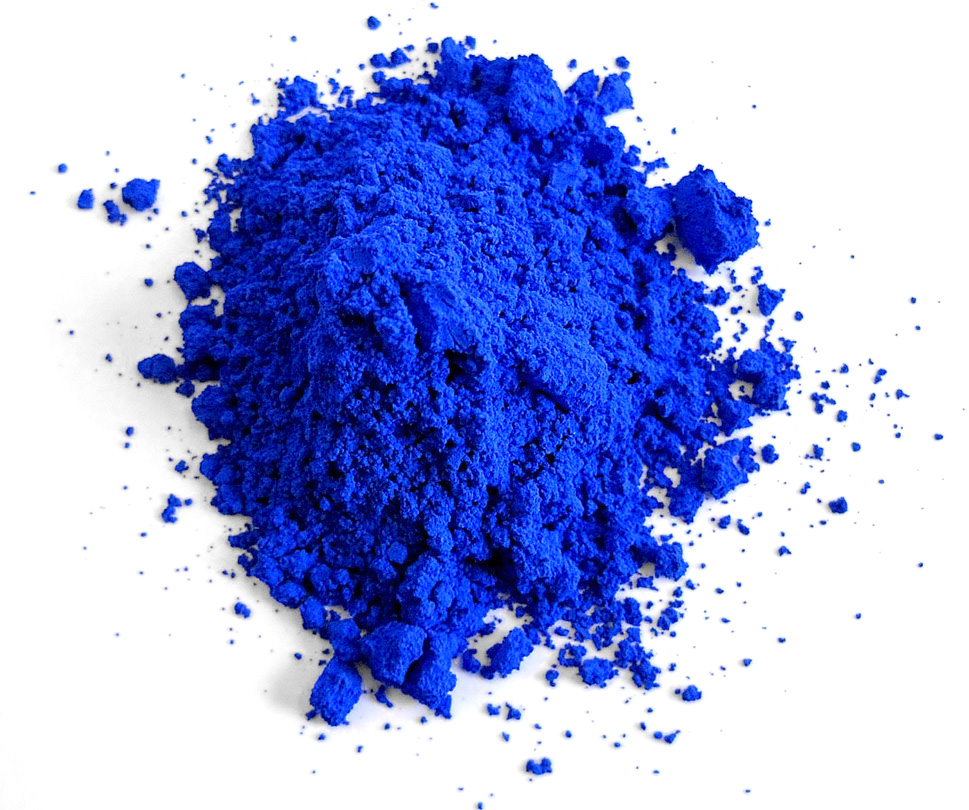Plastics, Neon, and Psychedelia: Making Unnatural Color
Institution: CalArts
Instructor: Douglas Goodwin
Duration: 15 Weeks
Course Description
This course explores the multifaceted nature of color, examining its physical, chemical, philosophical, and cultural dimensions. Students will trace the history of pigments, delve into the physics of light and color perception, and investigate synthetic colors’ role in art, technology, and industry. Through lectures, readings, and hands-on DIY labs, students will gain a comprehensive understanding of color's causes, applications, and implications.
Students will begin by examining the physical properties of light and the psychological perception of color before delving into how dyes, pigments, and digital systems create color. Through hands-on experimentation, students will learn techniques for identifying pigments using spectral signatures and gain practical experience synthesizing a range of historical pigments such as black, red and yellow ochre, verdigris, chrome yellow, Egyptian blue, Prussian blue, carmine, and mauve.

Learning Goals
- Develop a working understanding of the essential traits of color.
- Understand contemporary color specification systems (Pantone, RGB, CMYK, Lab, CIE).
- Explore the history of human exploration and use of color.
- Learn the physics (light), chemistry (pigments/dyes), and psychology (perception) of color.
- Engage with philosophical debates on the reality of color.
- Gain practical skills in creating pigments and conducting experiments.
Methodology
- Weekly lectures with 1–3 hours of required reading.
- Five DIY labs, completed outside class with group collaboration encouraged (up to four students per group). Results will be documented in an online collaborative notebook.
- Weekly quizzes (optional) to reinforce concepts and improve grades.
- Active participation in discussions and online courseware.
Assignment Breakdown
| % | Activity |
|---|---|
| 15 | Quizzes |
| 30 | Participation |
| 60 | Project-Labs (DIYLabs) |
Course Schedule
| Week | Theme | Demo/Lab/Media | Reading | Due |
|---|---|---|---|---|
| 1 | The Physics of Light | DIY spectrograph | N/A | – |
| 2 | Mineral Colors: Colors in the Caves | – | Clottes, Ball | DIYLAB: Build a spectrometer |
| 3 | First Synthetic Colors | Make Egyptian blue/faience | Ball | – |
| 4 | Additive and Subtractive Color | The mystery of orange | Poynton | – |
| 5 | Newton vs. Goethe’s Color | Reproduce Newton’s experiment | Newton, Goethe | DIYLAB: Make a mineral pigment |
| 6 | Floral and Animal Colors | Isolate vegetable color | – | – |
| 7 | The Virgin’s Color: Stained Glass | Chartres cathedral glass | Ball, Gage | – |
| 8 | Electric Color: Neon, Fluorescent, LED | Making Day-Glo | Batchelor, Albers | DIYLAB: Isolate a fluorescent color |
| 9 | Psychedelia and Expanded Cinema | – | Wolfe, Batchelor, Youngblood | – |
| 10 | SPRING BREAK | N/A | N/A | – |
| 11 | Coal Tar Chemistry | How to make ultramarine | Ball, Demand | DIYLAB: Separate dye with gel electrophoresis |
| 12 | Psychology of Color | R+G = Y | Hilbert & Byrne | – |
| 13 | The Medium is the Message: TV Color | Bentham and Nipkow disks | McLuhan | – |
| 14 | Light-Sensitive Colors: Instant Film & Color Constancy | Land’s Retinex demo | Land | DIYLAB: Make an electronic color |
| 15 | Computer Color: Encoding Color & Color Spaces | Algorithmic colors | Poynton | – |
DIYLabs
- Build a spectrometer.
- Make a mineral pigment.
- Extract plant/animal pigments.
- Separate dye/paint using gel electrophoresis.
- Isolate a fluorescent color.
- Create an electronic color.
Students may propose their own experiments or adapt online resources (e.g., Instructables.com or Exploratorium.edu). Documentation is required for all labs.
Required Readings
To Purchase:
- Philip Ball - Bright Earth
- Josef Albers - Interaction of Color
- Byrne & Hilbert - Readings on Color Vol. 1
Available Online:
- Cennino d’Andrea Cennini - Il Libro dell’Arte
- Charles Poynton - Frequently Asked Questions about Colour
- Marshall McLuhan - The Medium is the Massage
- Edwin Land - The Retinex Theory of Color Vision
Optional:
- Jean Clottes - Cave Art
- John Gage - Color and Culture
- David Batchelor - Chromophobia
Cost Estimate for Materials
| Material | Approximate Cost |
|---|---|
| DIY spectrometer kit | $10 |
| Highlighter pen | $1 |
| Agar powder | $5 |
| Philip Ball’s Bright Earth | $6 (used) |
Total Estimated Cost: $51